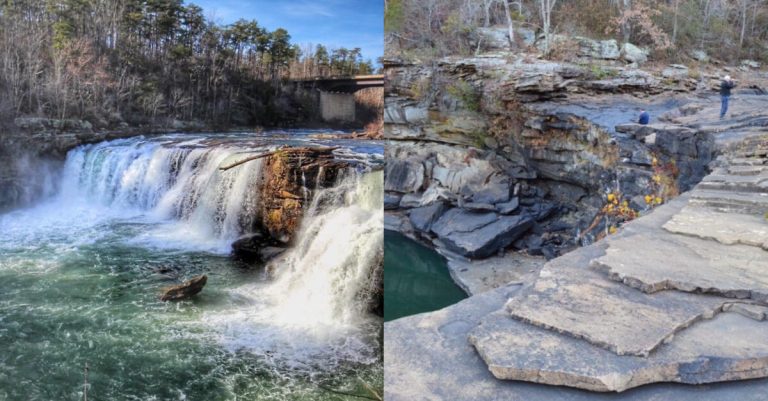Reviewed by: Nathan Watson
Nature’s truck stops: How to create a pollinator garden in Alabama and why it matters
Reading time: 6 minutes
Sponsored

Harvey Cotten, longtime naturalist and former Executive Director at the Huntsville Botanical Garden, calls pollinator gardens “nature’s truck stop.”
“The great thing about pollinator gardens for homeowners is that our plantings can make a difference. It is one of the few things each and every one of us can do and it will have an impact.”
How big of an impact?
Cotten reminds us that Alabama has over 400 different kinds of native bees that are hunting for that special plant or flower as a food source. Whether you have a small or big yard, you can create your own “truck stop,” and it is not difficult.
Pollinator Series

In our first installment about pollinators in Alabama, we examined why bees, butterflies, birds, beetles and moths matter.
We learned, for example:
- One out of every three bites of food you put in your mouth is created with the help of pollinators.
- 80% of the world’s flowering plants need a pollinator to reproduce.
- Pollinators are essential to the survival of about 200 species of birds that breed in Alabama or pass through during migration.
In this, our second story, Cotten will walk us through how you can create your own personal pollinator garden.
Meet Harvey Cotten

In Alabama and across the country, Harvey Cotten is known as a modern-day “Johnny Appleseed” of pollinator garden educators. Folksy and beloved within the gardening community, Cotten was the chief horticulturist for the Huntsville Botanical Garden for 25 years. Today, he serves on the boards of the AmericanHort and the Horticulture Research Institute, and his business card simply says “garden writer, designer and consultant.”
Pollinator Gardens Are Low-Maintenance

“I probably do more talks now on pollinator gardens than on any other topic,” said Cotten. “It is an easy topic, because most people, when they talk to me about what they want in a landscape—the first thing they say is… ‘I want it to be low maintenance.’”
Cotten told us gardeners don’t want to spray. They don’t want a lot of inputs such as water, fertilizer and pesticides. They want their gardens to be colorful all year long, providing them with different textures and layers, fruits, foliage and flowers throughout the year. Bottom line: they want an aesthetically pleasing garden.
“Well, all those things are exactly what a pollinator garden does,” he declared. “It’s a grouping of native plants, typically, which means they’re adapted to that area. They don’t need the inputs (fertilizer, pesticides etc…) to make them grow.”
Generally speaking, a pollinator garden tries to provide food throughout the year—food that comes from the nectar and pollen—which means we need flowers. So we need a garden that’s flowering from early in the spring, to as late in the fall as possible.
A Garden with Three Layers—A Tapestry

When you build your pollinator garden, think of it as three separate layers.
- Tree canopy
- Shrubs
- Ground cover
Begin with the trees—the top layer

“Within those three layers, you are going to have trees that are host plants, as well as nectar sources for all the different pollinators,” Cotten explained. “Redbud is one of the best early-season pollinator plants that we have—Red maple too. They bloom early in the spring when the native bees and others are just coming out.”
Alabama is blessed with a number of native trees big and small to plant in your yard (list). Below are ten examples:
Mid-story shrubs

The next layer you’ve got are the shrubs. All the pollinator insects need shelter. Mid-story shrubs like the Virginia sweetspire, or Sweet pepper bush are invaluable. The goal for the gardener is to have them flower at different times throughout the year.
“I like to have spring-flowering shrubs, summer-flowering shrubs and even fall-flowering shrubs, added Cotten.
Below is a list of 10 popular Alabama native shrubs. The Gardenia website also has a colorful list of recommended native shrubs on their website—HERE.:
- Dogwood
- Scarlet buckeye
- Bottlebrush buckeye
- Serviceberry
- Spicebush
- American holly
- Viburnums
- Carolina silverbell
- Virginia sweetshrub
- Sweet pepper bush
Ground Cover

After the shrubs, we move to the ground and the herbaceous layer.
“We get to play with all the different colors like coneflowers, Black-eyed Susans, Stokesia and salvias. We can create a tapestry that has something blooming from early in the year to all the way to the fall and give you a lot of different interest.”
You also need to grow host plants in your garden so butterflies can lay their eggs. The eggs hatch out as caterpillars that then create more butterflies. Make sure to plant milkweed which is the host plant of the monarch butterfly.
According to the Alabama Plant Atlas, Alabama is the ninth most floristically diverse state in the United States with 100s of different kinds of native flowering plants. Here are 10 favorites:
- Black-eyed Susan
- Purple coneflower
- Silphiums
- Grey-headed coneflower
- Stokes Aster
- Asters
- Mountain mints
- Native sunflowers
- Phlox
- Milkweeds
- Tickseeds
Resources: Start Today

Are you ready to get started creating a pollinator garden? Here are some of Harvey Cotten’s favorite “how to” websites:
- Pollinator Partnership: This website has it all, including step-by-step instructions and helpful tips beyond building a pollinator garden.
- National Wildlife Federation: This site includes links to programs you can implement at home, your local school, a college campus and in the community.
- Xerces Society: Provides a comprehensive list of four actions you can take to save pollinators, from how to plant flowers that benefit pollinators to providing nesting sites.
- Alabama Cooperative Extension System: Learn how to grow pollinator flowers, especially in an urban setting.
- Homegrown National Park: Need to find native plants for your pollinator garden? This site has a database and garden plans.
- Wildlife Habitat Council: Check out WHC’s webinars on pollinators.
- Birmingham Botanical Gardens, Aldridge Gardens, Huntsville Botanical Garden, Dothan Area Botanical Gardens, Bellingrath Gardens, Mobile Botanical Gardens, Longleaf Botanical Gardens: Local Alabama Botanical Gardens provide a wealth of hands-on expertise about pollinator gardens
Additional ways to learn about pollinator and to buy plants:
Attend the Birmingham Botanical Gardens upcoming Native Plant Conference from March 10-12.
Visit a Spring Plant Sale:
- Mobile Botanical Gardens – Plantasia Spring Plant Sale – March 17-18
- Birmingham Botanical Gardens Spring Plant Sale – April 14-15
- Huntsville Botanical Garden – Spring Plant Sale – April 14-15
Next Up—Places to Discover Pollinators Outside a Garden

For the third and final edition of our Pollinators series, we will look at the pollinators along the trails in our local forests, arboretums, parks, schools, neighborhoods and even outside a football stadium.
Sponsored by:




